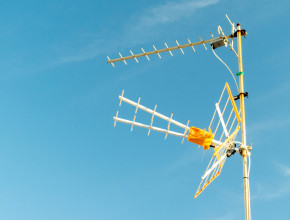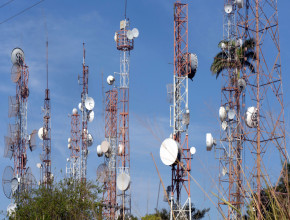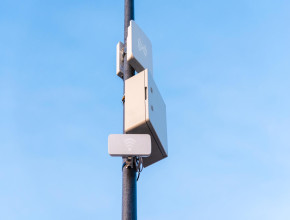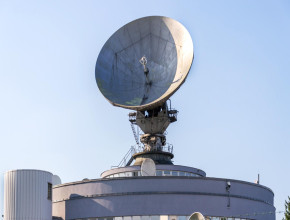
Today, the antenna is a very crucial device that we have in this modern world. Individuals and industries use their capability to establish seamless wireless connections between devices or systems. Two popular antennas, the panel antenna and the Yagi antenna, are known for their strong capability to share a wireless network in different applications. This guide will help you understand the difference between a panel antenna and a Yagi antenna. Let’s get started!
Introduction to a Panel Antenna
A panel antenna is a flat, rectangular-shaped antenna in modern communication systems. It is a type of directional antenna that you can use to capture and receive electromagnetic signals in particular directions. Panel antennas provide better range and performance by offering constant signal changes.
Nowadays, individuals and industries use this antenna in Wi-Fi systems, cellular networks, and point-to-point communications. The main advantage of this antenna is that it works well for both indoor and outdoor use. It provides better connection in devices like routers, access points, base stations, repeaters, etc.
Introduction to a Yagi Antenna
A Yagi antenna is also a kind of directional antenna, but it is made of a long central rod (boom) with many metal elements. Unlike panel antennas, which are flat and rectangular, Yagi antennas are designed with many metal elements. These help in focusing the signal in a narrow and specific direction. This makes it ideal for long-distance communications.
This antenna is used in TV reception, amateur radio, satellite communications, and wireless networks. Yagi antennas provide a stronger signal and improve range. It is suitable for both rural and urban areas for better wireless connectivity.
Differences between a Panel Antenna and a Yagi Antenna
A panel antenna and a Yagi antenna come with many differences. You should know how they can be useful for you according to your specific concerns. You cannot use both antennas in the same application because each antenna type is designed for specific purposes and may not work well in other situations. If you are wondering how these antennas are different, let's talk about the difference between panel antennas and Yagi antennas. Let's begin:
Design and structure
Panel antennas typically come in flat and rectangular shapes. It is made of a reflector and metal parts that are arranged in a grid inside the panel. This unique structure of the antenna enables it to easily capture signals coming from a specific direction in many applications.
On the other hand, Yagi antennas come with a driving element, reflector, and multiple director elements. These elements are connected in a linear array with a fixed beam element. Yagi antennas are made of a robust structure, allowing them to withstand adverse conditions and provide reliable performance.
Operating principle
You might be curious about how a panel antenna sends and receives signals. But the reason for doing so is its operating principle. The multiple radiating elements present in this antenna are connected to a feeder network. This provides power to the antenna. The elements of patch antennas are arranged in various configurations to obtain the desired directivity pattern.
On the other hand, the operating principle of Yagi antennas is slightly different from panel antennas. It is driven by its driving element and generates electromagnetic waves. A reflector, usually placed behind the driving element, reflects those waves forward. Now, the director of the Yagi antenna is responsible for directing and focusing the reflected waves forward. This antenna solution successfully shares signals over long distances.
Frequency range and bandwidth
Talking about the frequency range and bandwidth, both operate over a wide range of frequencies and bandwidth. Different antenna distributors and manufacturers may provide antennas with different frequencies. Generally, panel antennas are available between 400 and 8000 MHz. Yagi antennas range between 30 to 3000 MHz. These antennas are used for long-distance communication. However, panel antennas provide a wide radiation pattern with a wide beamwidth, while Yagi antennas have a narrow radiation pattern with a more focused beamwidth.
Gain and directivity
Both panel and Yagi antennas are indeed directional. But panel antennas have a lower gain compared to Yagi antennas. Lower gain means the antenna is designed to share and receive signals from wider ranges, but may not receive signals from very far. That makes panel antennas the solution for short-range communication. On the other hand, the Yagi antenna comes with its high gain properties, making it a better solution for sharing and receiving signals over long distances. But they may not be ideal for receiving a wide range of signals like panel antennas.
How to Choose the Right Antenna?
Choosing the right antenna depends on a few important factors. The first thing you need to think about is the type of antenna, whether it is directional or omnidirectional antenna. Both types of signals are used for different purposes. One is used to share signals in a particular direction, and the other is used to receive signals from all directions. Once you have decided this, you can consider the purpose.
Think about whether you want to use it for marine, radio, Wi-Fi or communication needs. Next, the frequency range is also an important factor when choosing an antenna. You need to choose the frequency range that matches the device or system you plan to use. After that, you also have to decide what mounting options it offers and think about whether you are comfortable with it or not. These are some of the main factors you should think about when choosing the right antenna for yourself.
Bottom Line
Both Panel and Yagi antennas have many similarities, such as being directional. However, they have many differences that make them different from each other. Panel antennas are ideal for interacting with a wider range of frequencies, while Yagi antennas can share signals over longer distances. Nowadays, panel antennas are used in telecommunications, security monitoring, smart cities, and internet service. On the other hand, Yagi antennas are used in industries such as broadcasting, ham radio, military communications, and rural wireless internet.





